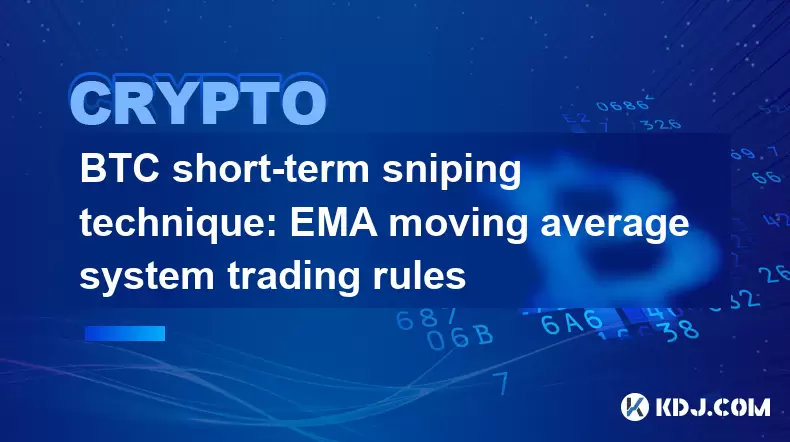-
 Bitcoin
Bitcoin $116700
0.24% -
 Ethereum
Ethereum $3973
4.34% -
 XRP
XRP $3.283
7.68% -
 Tether USDt
Tether USDt $1.000
0.01% -
 BNB
BNB $789.8
2.27% -
 Solana
Solana $176.2
3.31% -
 USDC
USDC $0.9999
0.00% -
 Dogecoin
Dogecoin $0.2238
5.14% -
 TRON
TRON $0.3389
-0.51% -
 Cardano
Cardano $0.7907
4.03% -
 Stellar
Stellar $0.4527
10.02% -
 Hyperliquid
Hyperliquid $41.07
4.27% -
 Sui
Sui $3.794
1.77% -
 Chainlink
Chainlink $19.49
10.40% -
 Bitcoin Cash
Bitcoin Cash $580.9
0.74% -
 Hedera
Hedera $0.2617
4.32% -
 Avalanche
Avalanche $23.41
3.67% -
 Ethena USDe
Ethena USDe $1.001
-0.03% -
 Litecoin
Litecoin $122.4
1.38% -
 Toncoin
Toncoin $3.364
1.49% -
 UNUS SED LEO
UNUS SED LEO $8.988
0.37% -
 Shiba Inu
Shiba Inu $0.00001295
2.82% -
 Uniswap
Uniswap $10.62
5.75% -
 Polkadot
Polkadot $3.922
4.46% -
 Dai
Dai $1.000
0.01% -
 Bitget Token
Bitget Token $4.494
2.15% -
 Monero
Monero $268.0
-1.30% -
 Cronos
Cronos $0.1523
3.68% -
 Pepe
Pepe $0.00001127
4.43% -
 Aave
Aave $285.4
4.85%
BTC short-term sniping technique: EMA moving average system trading rules
Use EMA system for BTC short-term sniping: 9-day EMA above 21-day EMA signals buy, below signals sell. Confirm with price action and set stop loss/take profit.
Jun 01, 2025 at 02:14 am

BTC short-term sniping technique: EMA moving average system trading rules
In the dynamic world of cryptocurrency trading, BTC short-term sniping has become a popular strategy among traders looking to capitalize on quick price movements. One effective method for executing this strategy is through the use of the Exponential Moving Average (EMA) system. This article will delve into the trading rules associated with the EMA moving average system, providing a comprehensive guide for traders looking to enhance their short-term trading skills.
Understanding the EMA Moving Average System
The Exponential Moving Average (EMA) is a type of moving average that places a greater weight and significance on the most recent data points. Unlike the Simple Moving Average (SMA), which assigns equal weight to all values, the EMA reacts more quickly to price changes, making it ideal for short-term trading strategies like BTC sniping.
To calculate the EMA, traders use the following formula:
[ \text{EMA}{\text{today}} = (\text{Price}{\text{today}} \times \text{Multiplier}) + (\text{EMA}_{\text{yesterday}} \times (1 - \text{Multiplier})) ]
Where the Multiplier is calculated as:
[ \text{Multiplier} = \frac{2}{\text{Time period} + 1} ]
For short-term sniping, traders typically use shorter time periods, such as the 9-day EMA and 21-day EMA, to capture quick market movements.
Setting Up the EMA System for BTC Trading
To set up the EMA system for BTC trading, follow these steps:
- Choose a reliable trading platform that supports technical analysis tools. Popular platforms include Binance, Coinbase Pro, and TradingView.
- Add the EMA indicators to your chart. On most platforms, you can do this by selecting the indicators menu, choosing moving averages, and then selecting EMA.
- Set the time periods for the EMAs. For BTC short-term sniping, set one EMA to 9 days and another to 21 days.
- Adjust the chart timeframe to a shorter duration, such as 1-hour or 4-hour charts, to better capture short-term price movements.
Trading Rules for BTC Short-Term Sniping with EMA
The following trading rules are designed to help traders execute BTC short-term sniping effectively using the EMA system:
Buy Signals
- EMA Crossover: A buy signal is generated when the 9-day EMA crosses above the 21-day EMA. This indicates a potential bullish trend in the short term.
- Price Action Confirmation: Before entering a trade, confirm the buy signal with bullish price action, such as higher highs and higher lows, or a bullish candlestick pattern like a hammer or engulfing pattern.
- Stop Loss and Take Profit: Set a stop loss just below the recent swing low to manage risk. Set a take profit at a level that offers a favorable risk-reward ratio, typically around 2:1 or 3:1.
Sell Signals
- EMA Crossover: A sell signal is generated when the 9-day EMA crosses below the 21-day EMA. This indicates a potential bearish trend in the short term.
- Price Action Confirmation: Before entering a trade, confirm the sell signal with bearish price action, such as lower highs and lower lows, or a bearish candlestick pattern like a shooting star or engulfing pattern.
- Stop Loss and Take Profit: Set a stop loss just above the recent swing high to manage risk. Set a take profit at a level that offers a favorable risk-reward ratio, typically around 2:1 or 3:1.
Executing a Trade Using the EMA System
Once a trading signal is identified, follow these steps to execute a trade:
- Confirm the signal using both the EMA crossover and price action.
- Place the trade on your chosen trading platform. For a buy signal, enter a long position; for a sell signal, enter a short position.
- Set the stop loss and take profit levels as per the trading rules.
- Monitor the trade closely, especially in the volatile crypto market. Be prepared to adjust your stop loss or take profit levels if the market conditions change.
Risk Management in BTC Short-Term Sniping
Effective risk management is crucial when engaging in BTC short-term sniping. Here are some key principles to follow:
- Position Sizing: Only risk a small percentage of your trading capital on each trade, typically no more than 1-2%. This helps to protect your account from significant losses.
- Diversification: Avoid putting all your capital into a single trade. Diversify your trades across different cryptocurrencies or trading strategies to spread risk.
- Discipline: Stick to your trading rules and avoid emotional decision-making. If a trade goes against you, adhere to your stop loss and exit the trade.
Backtesting and Refining the EMA Strategy
Before using the EMA strategy in live trading, it's essential to backtest it using historical data. This involves applying the trading rules to past price data to see how the strategy would have performed. Here's how to backtest the EMA strategy:
- Select a historical time period for backtesting, ideally covering various market conditions.
- Apply the EMA indicators to the historical chart and identify buy and sell signals based on the trading rules.
- Record the entry and exit points, as well as the profit or loss for each trade.
- Analyze the results to determine the strategy's effectiveness, including the win rate, average profit per trade, and maximum drawdown.
If the backtesting results are promising, refine the strategy by adjusting the EMA periods or adding additional filters, such as volume or other technical indicators, to improve its performance.
Practical Example of BTC Short-Term Sniping with EMA
To illustrate the EMA system in action, consider the following example:
- Scenario: On a 4-hour BTC/USD chart, the 9-day EMA crosses above the 21-day EMA, generating a buy signal.
- Price Action Confirmation: The price forms a bullish engulfing pattern, confirming the buy signal.
- Trade Execution: Enter a long position at the current market price. Set a stop loss just below the recent swing low and a take profit at a level offering a 2:1 risk-reward ratio.
- Trade Outcome: The price moves in favor of the trade, reaching the take profit level and resulting in a profitable trade.
This example demonstrates how the EMA system can be used to identify and execute short-term trading opportunities in the BTC market.
Frequently Asked Questions
Q: Can the EMA system be used for other cryptocurrencies besides BTC?
A: Yes, the EMA system can be applied to other cryptocurrencies. However, each cryptocurrency may have different volatility and market dynamics, so it's important to backtest the strategy on the specific cryptocurrency you intend to trade.
Q: What are the advantages of using the EMA system over other moving averages for short-term trading?
A: The EMA system is preferred for short-term trading because it reacts more quickly to price changes than other moving averages like the SMA. This allows traders to capture short-term trends and price movements more effectively.
Q: How often should I adjust the EMA periods for the best results?
A: The optimal EMA periods can vary depending on market conditions and the specific cryptocurrency being traded. It's recommended to periodically review and backtest different EMA periods to ensure the strategy remains effective.
Q: Is it possible to automate the EMA system for BTC short-term sniping?
A: Yes, many trading platforms and software offer the ability to automate trading strategies, including the EMA system. However, it's important to thoroughly backtest and monitor any automated system to ensure it performs as expected in live trading conditions.
Disclaimer:info@kdj.com
The information provided is not trading advice. kdj.com does not assume any responsibility for any investments made based on the information provided in this article. Cryptocurrencies are highly volatile and it is highly recommended that you invest with caution after thorough research!
If you believe that the content used on this website infringes your copyright, please contact us immediately (info@kdj.com) and we will delete it promptly.
- Bitcoin, Litecoin, and Avalanche: Decoding the Crypto Buzz in the Big Apple
- 2025-08-09 00:30:12
- Pengu Takes Flight: Can This Solana Meme Coin Conquer the Top 3?
- 2025-08-09 00:50:13
- Ethereum and Shiba Inu: Navigating the Bull Move
- 2025-08-09 00:35:12
- Navigating the Crypto Market in 2025: Smart Decisions for Meme Coin Investing
- 2025-08-09 00:55:55
- Punisher Coin: The Altcoin Ready to Punish Your Portfolio with Gains?
- 2025-08-08 22:50:16
- Mutuum Finance, Bitcoin Whales, and Binance: Decoding the Crypto Currents
- 2025-08-08 22:30:11
Related knowledge

Can the Bitcoin protocol be changed?
Aug 07,2025 at 01:16pm
Understanding the Bitcoin ProtocolThe Bitcoin protocol is the foundational set of rules that govern how the Bitcoin network operates. It defines every...

How are Bitcoin transactions verified?
Aug 08,2025 at 06:57am
Understanding Bitcoin Transaction VerificationBitcoin transactions are verified through a decentralized network of nodes and miners that ensure the le...

How does decentralization make Bitcoin secure?
Aug 08,2025 at 09:35am
Understanding Decentralization in BitcoinDecentralization is a foundational principle of Bitcoin's architecture and plays a critical role in its secur...

What are some common misconceptions about Bitcoin?
Aug 07,2025 at 07:22pm
Bitcoin is Just Like Regular MoneyA widespread misconception is that Bitcoin functions identically to traditional fiat currencies like the US dollar o...

What is the role of nodes in the Bitcoin network?
Aug 08,2025 at 04:14pm
Understanding the Function of Nodes in the Bitcoin NetworkNodes are fundamental components of the Bitcoin network, serving as the backbone that ensure...

Is Bitcoin a solution for inflation?
Aug 08,2025 at 04:57am
Understanding Inflation and Its Impact on Traditional CurrenciesInflation refers to the sustained increase in the price of goods and services over tim...

Can the Bitcoin protocol be changed?
Aug 07,2025 at 01:16pm
Understanding the Bitcoin ProtocolThe Bitcoin protocol is the foundational set of rules that govern how the Bitcoin network operates. It defines every...

How are Bitcoin transactions verified?
Aug 08,2025 at 06:57am
Understanding Bitcoin Transaction VerificationBitcoin transactions are verified through a decentralized network of nodes and miners that ensure the le...

How does decentralization make Bitcoin secure?
Aug 08,2025 at 09:35am
Understanding Decentralization in BitcoinDecentralization is a foundational principle of Bitcoin's architecture and plays a critical role in its secur...

What are some common misconceptions about Bitcoin?
Aug 07,2025 at 07:22pm
Bitcoin is Just Like Regular MoneyA widespread misconception is that Bitcoin functions identically to traditional fiat currencies like the US dollar o...

What is the role of nodes in the Bitcoin network?
Aug 08,2025 at 04:14pm
Understanding the Function of Nodes in the Bitcoin NetworkNodes are fundamental components of the Bitcoin network, serving as the backbone that ensure...

Is Bitcoin a solution for inflation?
Aug 08,2025 at 04:57am
Understanding Inflation and Its Impact on Traditional CurrenciesInflation refers to the sustained increase in the price of goods and services over tim...
See all articles

























































































